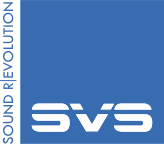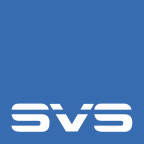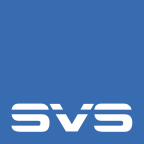Matt Yocum, Movie and TV Sound Engineer

It may surprise you to learn just how little of the sound present in movies and TV is recorded during the filming process. In most cases, there is a team of sound engineers and producers behind the scenes adding in sound effects, ambient noise, music, voices, and other audio cues; weaving layers together to build suspense, move the action forward, and create any number of emotions to complement the onscreen action.
In this interview, we discuss all of the above with Matt Yocum (here’s his IMBD page), a sound engineer who has worked films including Pet Sematary, Midway, The Cloverfield Paradox, The LEGO Movie Part 2: The Second Part, and a whole lot more. We also discuss the importance of bass in movies and learn how Matt is using an SVS SB-4000 subwoofer in his sound mixing studio when mastering for the LFE channel. You can check out his website here.
Questions And Answers:
How did you first hear about SVS?
My dad is an audiophile so I grew up in a home that always had speakers in most of the rooms and he would always love playing music and we'd watch movies on those systems as well. He heard through some reading online about this incredible line of subwoofers that everyone was raving about and he eventually bought an SB-1000 and loved it. Fast forward several years and I'm living in LA and it turns out my mentor also has an SVS in his home studio for when he's working from his house and said many great things about it.
I've always loved having my own robust system at home, investing in it and myself, and it has allowed me to do a lot of work remotely even before the days of Covid. This year I finally decided that I had had enough of a lack luster LFE channel and decided to pull the trigger on the SB-4000. What an upgrade that has been! It compliments my main studio monitors perfectly and delivers truly amazing accuracy and power at the same time.

How is the SB-4000 subwoofer being used in your home studio?
My subwoofer in my home studio is used primarily as an LFE channel, meaning it's a discreet eighth channel in my 7.1 system as opposed to bass managing my main monitors. That being said, my next purchase will likely be a monitor controller that will allow me to switch between bass managed stereo and 7.1 with the press of a button because sometimes I want to just sit and listen to music while crumbling the foundation of the house I'm in haha. I've also got loads of bass traps on as many surfaces as my space will allow to help control the room response and create an accurate and tight listening space. Room treatment combined with the EQ tuning that SVS provides really makes for a powerful combo.
Why are bass and low frequencies important in movies?
Low end is important in movies in many ways. Firstly, and most obviously, it gives a sense of gravity and weight to what you're seeing on screen. If you see a giant robot or creature running towards the heroes of the film and it sounds small or tinny, it’s not going to feel threatening or menacing in the way that is likely intended by the director. The main screen channels in a commercial cinema are plenty capable of delivering low end power but once that signal is sent to the LFE, it extends the bottom end in a way that really moves you in your seat. Bass is fun but it also tends to make a film feel "expensive" if you know what I mean. If the quality of the low end is solid and powerful then it just tends to make it feel like the sound team knew what they were doing!
Low end frequencies are notoriously difficult to control in nearly any room because of the pure and simple physics behind what is necessary to produce them. Bass frequencies travel in extremely long and slow waves and so small rooms like mine can be very difficult to control and therefore trust. I need absolute transparency because when I go from my 10'x10' home studio to a theater that holds 200-300 people I need to make sure that it’s going to translate. You can certainly find big subs from many companies that will create big bass and rumble but in my case I didn't just want power. As a sound designer and mixer I need tight control, fast and accurate response, and the ability for the sub to play as absolutely low as I need it to go without compromising quality or power. My SB-4000 has checked all the boxes in this regard and I couldn't be happier with it.
Please tell us a little about how the process of creating sound in movies?
There are many roles and departments that contribute to the final sound of a film and I tend to work in several capacities depending on the needs of each project. The basic process for any film is that the sound of the voices of the actors is recorded on set. Nearly all the sound that you see in a film is replaced or created after the fact. The sole job of the production sound crew is to capture intelligible and clean dialogue and that is it.
Once the picture has been shot it goes into post-production where the picture editor will work with the director to cut together the scenes. The assistant editor might cut in temporary sound effects to give a sense of what the director is looking for and then a supervising sound editor comes in and puts together a team of people to help craft the sonic signature of that film. That team is comprised of sound effects editors who cut sounds from libraries that are either available commercially or are recorded bespoke for the film - think doors, cars, ambiences, creatures, robots, etc.
They layer and design new sounds to fit what is needed and the supervisor plays an important role in guiding that process to make sure it is cohesive and elevating the narrative. There are dialogue editors who go through and smooth out and clean up the dialogue recorded on set and help decide if any of that material needs to be re-shot in a studio after the fact because of noise on set or if the director decides they want a different performance.
Foley artists are the ones you may have heard about and seen videos of as its easiest to show what they do since they perform and record sounds live to picture - footsteps, cloth, touches, custom stuff that is too tedious to cut from a library and helps to ground the world in reality. And lastly, there are the re-recording mixers who take all of the sounds from the supervisor and the score from the composer and weave them together on a dub stage to ultimately tell the story in a way that feels immersive and authentic to the film.
All of these roles come together to ultimately help tell the story that the Director envisions. None of our cool sounds or creative decisions mean anything if it doesn't help you to better immerse yourself and experience emotion with the characters in front of you. We are often described as technicians but honestly that’s only a fraction of the equation. At the end of the day we all do our best to contribute as story tellers with our art.

Please describe your role as a sound design engineer? What does your work include on movies like Cloverfield Paradox, Pet Sematary, Midway and other films?
Depending on the film, I wear many hats. On some projects I am all of the above described rolls. On indie or mid-level productions I may only supervise or mix. On the big studio films I'm typically working as a sound effects editor/designer and the goal is to one day supervise and mix. Each roll brings its own set of unique challenges and I honestly love switching it up and getting to work in many capacities. It keeps the work interesting and every film is unique in its approach as well.
If I had to pick a favorite role though, I'd definitely say mixing because it’s a super satisfying part of the process. You get to see the months of hard work from so many departments come together and begin to really feel like a legitimate movie. Final visual effects role in, the music is played on the dub stage for the first time, and it’s the place where a ton of immediate collaboration and creative decisions take place since the director and other are right there in the room with you. Plus, who doesn't like being in a movie theater with the absolute top of the line sound systems all the time?
What are some of your favorite bass-heavy scenes from movies you’ve worked on?
The first big movie studio movie I got to work on was Cloverfield Paradox at JJ Abrams' Bad Robot Studios in Santa Monica, CA. My mentor and supervisor / mixer on that movie, Will Files, had just helped build them a brand-new in-house Dolby Atmos dub stage and the sound system in that room is absolutely incredible. The bass during the opening sequence of that film, as well as during the firing of the particle accelerator, was so intense that I felt like I could lift my feet of the ground and levitate! It was insanely fun to break into the industry with such a cool crew, on such a fun sci-fi flick, with one of the most popular directors/producers of our generation, all on a flawless new stage. By the time we were done with that movie they definitely had to re-tighten some of the screws and bolts that were holding up the speakers in that room!
Anything you can share about editing sound for movies that might surprise people?
I think there are many things that would surprise people about editing sound for film but I can think of two specifically. For one, as I mentioned above, I think most people assume that a lot of the sound you hear in a film is what's recorded on set. If you think about it though, on set they're typically recording using one or two shotgun microphones on boom poles and then a wireless lavaliere mic for each main actor. That means that nearly 100% of the sound we get from production is mono, and the mic is always aimed right at the actor's mouth to get the cleanest dialogue possible. This means that every other sound must be added after the fact! That car going by, the lawn mower next door in the front yard, the dog barking in the city ambience, the sirens in the distance, the list goes on.
Every sound you hear in a film is specifically chosen, cut, layered, and panned exactly where we choose and is all for a specific purpose. Sounds in real life are very unpredictable but sounds in film are all precisely engineered to help tell the story in front of you. It’s all fake in the best possible way. The sound from on-set alone would make for a very bizarre and boring experience!
The second thing that might surprise people is just how much a scene can change based on the decisions of the director, supervisor, and mixer. A simple yet fun example would be a telephone ring. Imagine a character in a room set in the 1960's. She sits by the rotary phone on the table beside her and after a moment it rings. Now imagine the phone rings 3, 4, 5, 6 times before she finally picks it up. Why did she wait so long? Is she nervous about answering for some reason? What if it doesn't even get through ringing one full time before she grabs it immediately. Now there's a strong sense of urgency. The call must have been important - she was waiting for it. This is just one example that shows how the placement of a seemingly mundane sound can affect the way we perceive the psychology of a character within the context of a narrative.

How do you see the future of cinematic sound evolving?
The future of cinematic sound is going to become more and more immersive. Dolby, a company for which I consult, is really working hard to figure out how to create the most immersive experience possible regardless of what setup anyone has at home. The main vehicle for this is through their Dolby Atmos technology which most of your readers are probably already familiar with in one way or another. The Atmos theatrical experience is by far my favorite way to experience a movie. That being said, in the age of Covid, we can't all go to the theaters as we normally would so one of the most exciting innovations coming out of Dolby right now is the amazing ability to bring the Atmos experience to the headphones. This means that a consumer can put in a pair of earphones and experience an extremely immersive mix where it really sounds like things are out in front of you, to the side of you, and behind you. Helping to develop this tech with them has been one of the biggest honors and most exciting portions of my career thus far. I'm super eager to see where it leads.
For anyone who listens to podcasts out there, QCode is a production company making amazing innovative content and are the first narrative podcasts in the world to be mixed in Dolby Atmos. I supervised and mixed the series, The Left Right Game, with them and am currently supervising and mixing a new series called, Ghost Tape 10. These are available on Apple Podcasts as well as most other podcast distribution services.
Anything else you’d like to share with the SVS community?
I'd say to the SVS and audiophile community that there are so many products and companies out there, all selling the newest greatest invention ever, and it can be dizzying sometimes to sort through the legit stuff and the snake oil. The same thing happens in the prosumer space as well and the tech specs and crazy math can all seem overwhelming but all that stuff aside, as my mentor says, "If it sounds good, it is good". In the case of SVS I think their products sound VERY good from hours of sitting in my studio and listening to demanding tracks, both music and film. I for one love to geek out over the technical stuff but my point is simply, never stop trusting your ears and don't let fancy language create a gap between what you think you should be hearing and what you are actually hearing. In my case I'm just extremely happy that SVS both talks the talk and walks the walk. The difference is clear to my ears!
Any cool projects you’re working on or that you’d like to plug/promote?
I've already plugged the podcast works above which I highly recommend everyone check out. Ghost Tape 10 is the current series which is still in progress with new episodes coming out every Monday so be sure to subscribe! I'm also currently working as a sound effects editor on the Boss Baby 2 movie, a sequel to the first which is a lot of fun. Its good wholesome fun with plenty of jokes for both the kids and the adults.
I personally love cutting on animated movies because they're so full of character and really allow for more stylized work than we normally get to do with live action films. I just did sound design and mix for the recent Lil Nas X Holiday teaser which aired during an NFL game recently and is out on YouTube for viewing. Its related to the Old Town Road music video which I also had the pleasure of doing the sound design and mix for last year which was super fun.
Lastly, I'd love to just give a big thank you to SVS for this opportunity and I hope to enjoy your products for many more years to come!

SVS Featured Producer: Ben Bloomberg, Co-Founder, Advanced Sonic Alert Technologies

SVS Featured Producer: Michael Lewis, The Song Mill Studios

Featured Artist System: Roey Hershkovitz, Music Segment Producer, CONAN Show
Share Your Thoughts







